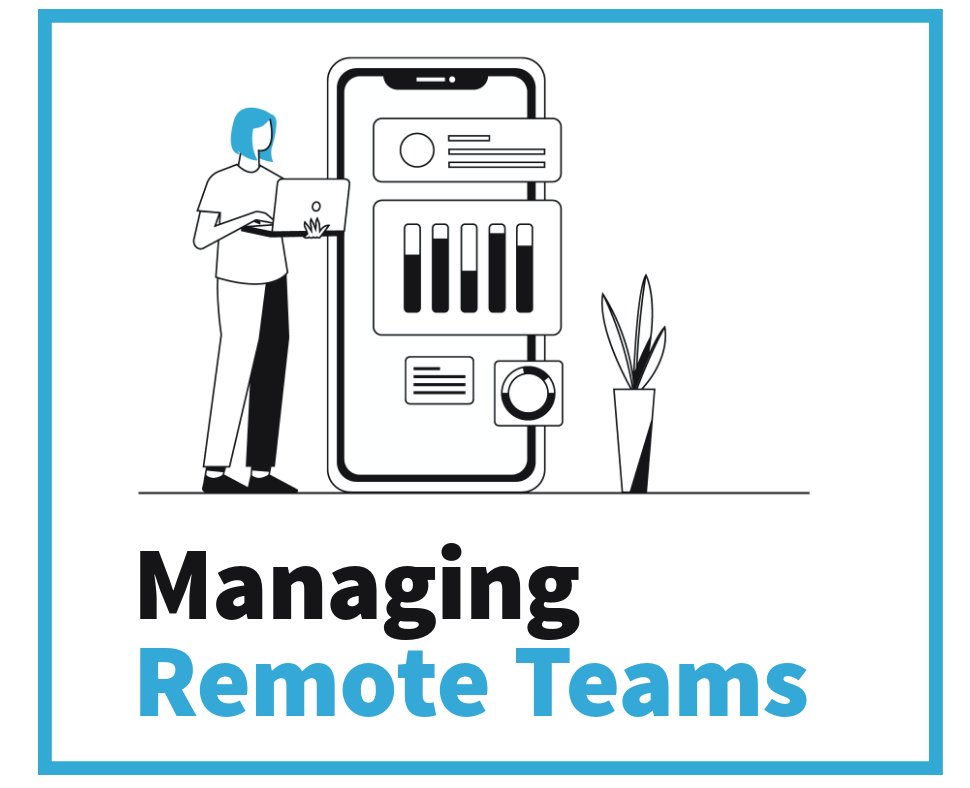 Our new e-book, Managing Remote Teams reaches out to managers and team leads as they bring their teams into part- or full-time remote work. Chapter 4 speaks about the direct role managers play in remote team success.
Our new e-book, Managing Remote Teams reaches out to managers and team leads as they bring their teams into part- or full-time remote work. Chapter 4 speaks about the direct role managers play in remote team success.
Now that you know about how remote teams function and the ways your business can benefit from allowing your staff to work from home, you can concentrate on the daily impact managers have on their employees who work from a range of locations. We’ll show you the tips and tricks, and what actions to avoid, as you move your team throughout the year.
Our Tips and Tricks
What do you do, daily and weekly and monthly, as a manager? There are a number of tasks and practices you should familiarize yourself with if you want to see your remote team grown and begin to trust in the process or working outside an office.
Solicit Feedback
As a leader of remote workers, your daily routine might need to adjust as you continue to motivate your staff and remain accessible.
One of the most important aspects to a good remote team manager is their willingness to accept feedback. When you ask your team – often and with sincerity – how the workplace can improve, you open up your business to change that arises from the people who experience the daily grind closest.
Set Clear Expectations
 Your clarity is paramount when it comes to having tasks completed on time and within bounds.
Your clarity is paramount when it comes to having tasks completed on time and within bounds.
Set deadlines like you would normally for all tasks your employees need to complete. Make sure that everyone understands what it means for a task to be complete and how they can submit assignments so you know they have arrived.
Make Your Schedules Clear
It’s simple to keep your entire team calendar within a single program. We list a number of alternatives in our e-book.
Remote team success hinges on the left hand knowing what the right hand is doing. Using an online scheduling system allows you as a manager to set your deadlines for tasks and see the progress that’s taking place on line items. It also helps your employees see what everyone else is working on so they can ask questions and provide feedback directly to others involved in the same projects.
What to Avoid?
 We talk in detail about practices you should avoid as a remote team manager. If you want to see remote team success, get started with a few quick tips:
We talk in detail about practices you should avoid as a remote team manager. If you want to see remote team success, get started with a few quick tips:
- Don’t change your expectations of workplace performance for in-office versus remote employees
- Stray clear of leaning (virtually) over an employee’s shoulder while they’re trying to work
- Don’t ignore progress made throughout the day, even if that progress is small
Finding Remote Team Success
Overall, it’s not difficult to switch to being a manager of remote employees.
You can still expect your employees to perform tasks throughout the day. You can still have conversation about important topics alongside banter about personal interests. You can remain diligent with deadlines for all the projects on your desk.
The biggest change with remote work is that new hires, and many of the people you have worked with for years, will be a little farther away than the desk across the room. A quick refresher in virtual etiquette can help you nurture all those relationships no matter how physically distant your team has become.
Check out Chapter 4 of Managing Remote Teams today to take a deeper look at how you can find remote team success.







